#semper opera house
Text

1939 Beniamino Gigli was guest in Dresden and took this private photo before the Semper Opera. And then he signed this.
#Beniamino Gigli#Gigli#lyric tenor#tenor#Semper Opera#opera#classical music#bel canto#music history#chest voice#La Scala#metropolitan opera#the Metropolitan Opera House#the Met#Met#Teatro alla Scala#aria#maestro#classical singing#classical studies#classical singer#opera singer#actor#photography
4 notes
·
View notes
Text
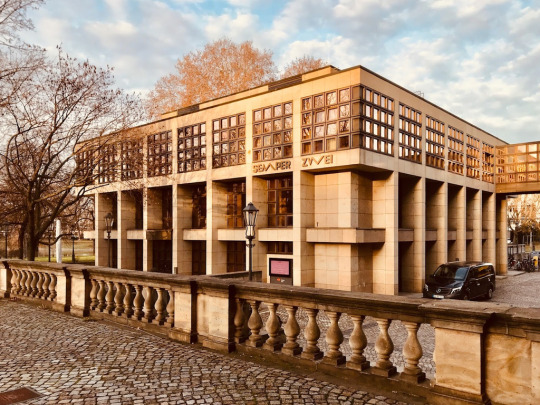
Opera House "Semper Zwei" (1977-85) in Dresden, Germany, by Wolfgang Hänsch
224 notes
·
View notes
Photo
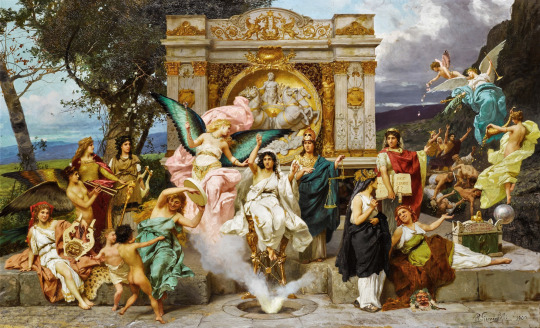
Henryk Siemiradzki (Polish, 1843 - 1902)
Parnassus, 1900
Kept in the same family for over a century and never shown in public, Henryk Siemiradzki’s Parnassus is an exciting rediscovery for collectors and art historians alike. It is a version, reduced in size, of the artist’s last great work, and one of his most celebrated, the curtain of the Opera House in Lviv.
Drawing heavily on classical allegories, Parnassus is a monumental representation of creativity and the arts. At the centre of the composition is the Pythia, the high priestess of the Temple of Apollo at Delphi, who represents inspiration. She is flanked by a winged figure representing imagination on the left, and Minerva holding scales representing wisdom on the right. In the background, we see the Temple of Apollo with a relief featuring the God of music, dance and poetry. The three main elements of artistic creation are repeated more explicitly in the marble cartouches with the inscriptions Intuitio, Phantasia, Sapientia, (inspiration, imagination, wisdom).
On the left, we find allegorical representations of dance, poetry and music, the latter in the form of a Siren, half-woman, half-bird. On the right, History is holding a book with the inscription Sic fuit, sic est, erit semper? (Thus it was, thus it is, thus shall it always be?). She is looking at Comedy and Tragedy and is pointing to Wealth, Fame and Love, who are set against a backdrop of violence.
#Henryk Siemiradzki#Henryk Hektor Siemiradzki#Parnassus#art#fine art#fine arts#art history#art study#classical art#european art#polish art#allegorical art#oil painting#poland#european#western civilization#temple of apollo#greek mythology#mediterranean#europe
44 notes
·
View notes
Photo
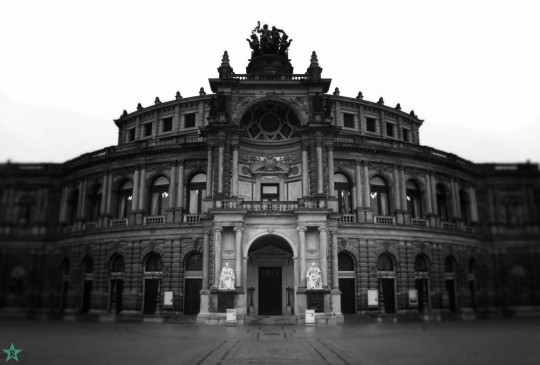
semper opera house dresden
33 notes
·
View notes
Text
A palace full of art in Dresden

The Zwinger in Dresden, the historic capital of Saxony, is a Baroque palace complex built on the site of a former fortress by August the Strong, King of Poland, Grand Duke of Lithuania and Elector of Saxony (Friedrich August I der Starke in German, August II Mocny in Polish).
Built between 1711 and 1728, the Zwinger has several characteristic elements, such as the Crown Gate (Kronentor, in German), presided over by a representation of the Polish royal crown, the Nymphs' Fountain (Nynphenbad), the armoury, the so-called Hall of Mathematics and Physics, and the spaces housing various collections.
In terms of museums, the Zwinger includes a zoological museum, a porcelain collection and the Old Masters' Picture Gallery, which houses more than 700 paintings from the Renaissance to the Baroque period and was established by Frederick Augustus himself and his son August III, who enlarged it by purchasing around one hundred works from Duke Francesco III of Modena.
August III was responsible for the purchase of Raffaello’s Madonna Sixtina, a work whose angels at the bottom of the painting have been reproduced countless times as decorative elements.
This work also came into the limelight in 2022 when a campaign by the environmental activist organisation Last Generation (Letzte Generation, in German) led two of its members to attach themselves to the frame of the painting as an act of protest. The restoration value of the damage to the painting was estimated by the State Art Collections Dresden (SKD) at between 3,000 and 5,000 euros.
However, the Zwinger buildings intended to house the Picture Gallery were completed in the 19th century by the architect Gottfried Semper, who designed the nearby opera house which bears his own name, Semperoper, although its official name is the Saxon State Opera of Dresden.
2 notes
·
View notes
Text
Su presencia irá conmigo y me dará descanso

Su presencia irá conmigo y me dará descanso
💙💙💙💙💙💙💙💙💙💙💙💙💙💙💙💙💙💙💙💙
💙💙💙💙💙💙💙💙💙💙💙💙💙💙💙💙💙💙💙💙
“Muchas veces me he puesto de rodillas, con la abrumadora convicción de que no tenía a dónde ir. Mi propia sabiduría y la de todo aquello por encima de mí, parecían insuficientes ese día”.
Abraham Lincoln
Siempre me ha fascinado y me ha causado la más profunda admiración la figura de Abraham Lincoln; recuerdo a mi abuelo paterno, el mejor cuenta… cuentos, historias, leyendas y realidades, relatarme con todo lujo de detalles el asesinato de este precioso hombre por cualquier ángulo por el que se le pueda observar; y la preciosa frase que he dejado en el encabezamiento de este artículo, me deja demasiado clara su postura y relación en cuanto a Dios. No me extraña que hiciera lo que hizo, incluso perder su propia vida por defender sus ideas y a los más desvalidos. Os dejo unos pequeños trazos de su vida:
Abraham Lincoln fue un político y abogado estadounidense, 16º Presidente de los Estados Unidos de América. Su figura es reconocida por haber abolido la esclavitud.
Nació en Kentucky el 12 de febrero de 1809. Murió el 15 de abril de 1865 en Washington D.C, asesinado por un secesionista.
Abraham Lincoln nació en el seno de una familia modesta de raíces británicas en Hodgenville, en Kentucky. Pronto se mudó a otros lugares como Indiana y Springfield. Debido a los pocos recursos económicos de los que disponían, siempre tuvo que trabajar para ayudar a su familia.
Hacia 1830 se trasladó con su familia a Illinois, donde consiguió empleo como comerciante en el río Mississippi. Poco después se estableció en la ciudad de New Salem, donde se unió a las fuerzas políticas locales. Aquí es cuando mostró estar en contra de la esclavitud.
Cinco días después de la rendición de los secesionistas sureños, Abraham Lincoln fue a la Ford’s Opera House de Washington para ver una representación teatral con su esposa Mary.
Uno de los actores que actuaba esa noche era un ferviente seguidor de los confederados y, por tanto, odiaba a Lincoln: John Wilkes Booth. Conocedor de que el presidente asistiría a la función, planeó su asesinato.
Sin que encontrase ningún impedimento o dificultad, Booth llegó hasta el palco del presidente. Con sigilo, sacó un arma, apuntó a su cabeza y le disparó por la espalda. La leyenda dice que poco después pronunció las palabras Sic Semper tyrannis!: «Así llega siempre la muerte a los tiranos».
A la mañana siguiente, 15 de abril de 1865, Abraham Lincoln murió en su habitación de la Casa Blanca.
Todos en nuestras vidas pasamos por momentos difíciles, simplemente porque por alguna razón el Señor así lo permite; en épocas como la que estamos viviendo en estos momentos, el corazón se me encoge un poquito y me acuerdo de alguien cuya fe fue probada hasta el extremo, estoy refiriéndome a Abraham, el padre de la fe, citado con mucha vehemencia en la galería de los héroes de la fe recogida en Hebreos 11.
Cuando Dios llama a Abram en Ur de los caldeos, era un hombre relativamente joven para aquel entonces; se le presenta, le habla, le dice que deje toda su tierra y su parentela y le hace una preciosa promesa.
¿Cómo reaccionaríamos nosotros si nos ocurriera algo parecido? ¿Realmente creeríamos a un Dios absolutamente desconocido para nosotros, viviendo en una sociedad politeísta, sin tener descendencia con la preciosa Sarai, siendo rico y de buena posición?
Me encanta cuando el Señor lleva a aquel escogido y le muestra las estrellas del cielo y las arenas del mar… ¿Puedes contarlas?… ¡Pues así haré de ti tu descendencia! En esa preciosa promesa iban implícitas muchas cosas, pero aquel bendito hombre de fe, creyó a Dios y le fue contado por justicia, se lió la manta a la cabeza y se fue con todo lo que tenía, su esposa y su sobrino, hacia una ciudad que no conocía.
Fueron muchos los años de espera, muchas las pruebas difíciles, también unos cuantos errores como el de Egipto, y de allí Agar, eso trajo a Ismael… Pero Abraham siguió creyendo a Dios y cuando humanamente era totalmente imposible y Dios oyó reír a Sara a sus 90 años, al escuchar que iba a ser madre, Dios cumplió la promesa ¡al fin!
Quiero pasar por alto todo el tremendo tema de Agar e Ismael, algo brutalmente fuerte, y aquello de…. ¡el viviente que me ve! Para llegar al tremendo episodio de la gran prueba de Abraham, el pedido por parte de Dios del sacrificio del hijo de la promesa, para la mayoría de los comentaristas un adolescente de unos aproximadamente 17 años. Por mucho que me esfuerce, jamás podré ser capaz de comprender como se sintió Abraham, aquella noche en silencio entre mil preguntas calladas en el alma, el ni decir una sola palabra a su esposa Sara, la angustia tremenda de su corazón; pero su increíble fe.
Son tremendas las palabras que Abraham les dice a sus criados al pie del Moriah, “quedaos aquí, el muchacho y yo subiremos, adoraremos y volveremos”.
“Al tercer día alzó Abraham sus ojos, y vio el lugar de lejos”. La analogía con Cristo es tremenda…
Ambos fueron amados por su padre.
Ambos se sometieron en obediencia.
Ambos llevaron la leña (cruz) para su sacrificio.
Ambos fueron sacrificados en un monte de Jerusalén.
Ambos fueron librados de la muerte el tercer día.
Me impresiona la fe de Abraham, y me impresiona la obediencia de Isaac. Muchos comentaristas, como hemos dicho antes, dicen que era un adolescente pasando a joven; pero los comentaristas judíos creen que tenía algo más de 30 años.
Subiendo el monte, la pregunta de Isaac, era…. “Padre, he aquí la leña, he aquí el fuego, ¿donde está el cordero?” La respuesta era, “Dios proveerá”.
Por más que quiera ponerme en el lugar de Abraham, no puedo imaginarme su lucha interna o sus pensamientos; pero sí puedo ver su obediencia perfecta.
Un holocausto de aquella magnitud implicaba matar y luego quemar, quemar en adoración. Ni padre ni hijo se resistieron, pero el momento en el que el Ángel de Jehová grita… “No extiendas tu mano sobre el muchacho, ni le hagas nada; porque ya conozco que temes a Dios”. Es entonces cuando sale el corderito de entre los matorrales, y esto me enseña que jamás saldrá para mi “el corderito de entre los matorrales”, hasta que haya cruzado el umbral de la puerta de la obediencia.
Y aquí es cuando vuelvo a la increíble frase de Lincoln…
“Muchas veces me he puesto de rodillas, con la abrumadora convicción de que no tenía a dónde ir. Mi propia sabiduría y la de todo aquello por encima de mí, parecían insuficientes ese día”.
No sé el tipo de prueba que estás atravesando, o que es lo que pide Dios de ti…. Sí sé lo que le pidió a Lincoln, lo que le pidió a Abraham, y lo que me pide a mí.
Cualquier prueba o fuego de esta magnitud, cuesta tremendo dolor y tremenda valentía por parte de cualquiera; en nosotros está el decir…. ¡No, lo siento, es demasiado para mí! O el simplemente responder… No entiendo ni comprendo Padre, esto me está costando mucho; pero ¡de acuerdo! Doblo mis rodillas y obedezco, sé perfectamente que en mi obediencia, saldrá el corderito del matorral, y también que no tengo otro lugar a donde ir.
¡Esta es mi respuesta! ¿Cuál es la tuya?
💙💙💙💙💙💙💙💙💙💙💙💙💙💙💙💙💙💙💙💙
En Aquel que lo entregó todo por ti y por mí...
Beatriz Garrido 💙💙💙💙💙💙💙💙💙💙
0 notes
Text
Luxury Travel: Experience The Luxury Of Hiring High-End Cars For Your Vacation

Luxury transportation cannot get much better than a Cadillac or Mercedes V-Class when going from point A to point B. Both vehicles epitomize class and provide an exceptional ride for those who can afford it. Suppose you happen to be in Europe, especially in Prague or Dresden. You're in for a treat because these cities provide a picture-perfect setting for driving around in such luxurious automobiles. Let's explore the fascination of Cadillac hire Prague and Dresden Mercedes V-Class rental, demonstrating why these are truly unique adventures.
Cadillac Hire In Prague: Recognize The Eternal Beauty
The Czech Republic's central city, Prague, is an excellent example of how the past and present coexist harmoniously. Beautiful buildings, quaint alleyways lined with cobblestones, and breathtaking scenery create an enticing environment begging to be explored in style. And a Cadillac is an acceptable vehicle to make such an entrance.
When you see a Cadillac, you immediately think of class and sophistication; it's more than just a car. A Cadillac hire Prague provides unparalleled luxury because of its stylish exterior, luxurious interior and innovative features. Whether you're taking a tour of Prague Castle, exploring Old Town Square, or gliding along the picturesque Vltava River, you'll have a fantastic time in the Cadillac.
A Cadillac's roomy interior makes it an excellent pick for road trips with the family or a large group of friends. World-class service begins when you enter the vehicle, setting the stage for a trip through the heart of Europe you will never forget.
Mercedes V-Class Hire In Dresden: Superior To All Others
Dresden, Germany, a city on the Elbe River, is recognized for its rich history and numerous works of art. Dresden's intriguing blend of history and beauty can be seen throughout the city, from the lavish Zwinger Palace to the stunning Frauenkirche. A Mercedes V-Class is the ultimate mode of luxury transportation for sightseeing in this metropolis.
The Mercedes V-Class is a high-end MPV that successfully marries style and utility. The V-Class's seven-passenger capacity means your entire party can ride in luxury. The inside of the V-Class is a study in luxurious comfort, with its soft leather upholstery, soft lighting, and high-tech comforts.
The Mercedes V-Class is a versatile vehicle that can take you to the Semper Opera House for an evening of classical music or a lovely drive through the Elbe Valley. Mercedes V-Class hire Dresden is ideal for tours around town and longer excursions into the scenic German countryside.
Reasons To Rent A Supercar
Renting a luxury vehicle like a Cadillac in Prague or a Mercedes V-Class in Dresden has several benefits to enhance your trip. Some of the benefits are as follows.
Coziness and Good Taste: When you drive in a luxury vehicle, you can sit back, relax, and enjoy the ride because it was built with your comfort in mind.
Individualized Care: You can relax and enjoy the voyage with the help of a professional chauffeur, a service offered by many luxury car rental agencies.
First Impression That's Hard to Forget: Your arrival at the event or occasion will be more memorable if you do it in a luxurious vehicle.
Durability and Trustworthiness: The high-tech safety systems included in today's luxury vehicles allow their owners to relax and enjoy the ride.
Perfect for the Camera: The beautiful exteriors of these vehicles offer excellent photo ops to document your travels in style.
Conclusion
Renting a Cadillac or Mercedes V-Class hire Dresden for your trip is a great way to add a touch of luxury to your vacation. Adding an extra dose of magic to your tour of these fascinating European towns, these limousines provide an experience unlike any other in comfort, style, and refinement. Indulge yourself and set out on an adventure as you soak up the classic sophistication of a luxury vacation.
0 notes
Text
鋼琴巨匠 鲁道夫·布赫宾德(Rudolf Buchbinder)
德累斯顿国家管弦乐团(Staatskapelle Dresden)
貝多芬鋼琴協奏曲 全集
5,15,2019 在廣州星海音樂廳(至16日)
今晚的貝多芬第五鋼琴協奏曲,完美無瑕,坐在靠後的樓座,除了一覽全場觀眾,還能自如地觀察鋼琴家的指法。
到底是集德奧傳統之大成的百年名團,聽上去,仿佛整個樂團被聚集在一種魔幻般的合力中。非常集中的聲音,情緒濃度非常大,而布赫賓德可以非常遊刃有餘地駕馭這首鋼琴協奏曲的特殊情緒,樂團在他手裡,纖细又不乏張力的演繹,而恰到好處的分寸,令我聽到的聲音似乎不是這個現場,像聽慣了的唱片合集的某一張。
德累斯頓國家管絃樂團,連同這個城市的國家歌劇院(在semper opera house森帕歌劇院),都令我回想起當年在這裡的現場看他們的演出。其實离柏林並不遠,兩個小時的火車,這城的古典氣質讓人屏息,易北河邊看這城的輪廓,空氣中也彌漫那些厚重的人文沉澱,我可以在哲學家步道散步,如果耳邊迴旋的是貝多芬的鋼琴協奏曲,就與這城的氣質不謀而合。
今晚德累斯頓國家管絃樂團來到廣州,自然是大件事,雖然去年10月他們也在這裡演奏了舒曼交響樂全集,由thielemann指揮,不過今晚協奏雖然編制小,也毫不掩飾這個世界名團的一貫實力。
德奧作曲家的作品還是由德奧名團演奏最正宗,真正的德奧氣質,思辨和浪漫情懷都熔於一爐——氣息不散,而是讓人驚歎的一致性。當然演奏的技術已經在對貝多芬音樂的靈魂表達層面讓人歎為觀止——
於是我聽到的是這首第五鋼琴協奏曲的夜闌人靜、歡欣情緒和鋼琴炫技並於樂團的對答,都妙不可言。貝多芬第五鋼琴協奏曲於1811年首演於萊比錫,音樂內容跌宕起伏,靈感取自法奧戰事,在維也納寫作完成,宏亮的和弦,溫柔的詩歌樂句,迴旋曲與奏鳴曲的混合,鋼琴華彩樂段作結,都讓人記憶深刻。
布赫賓德今晚狀態很好,飽滿的情緒令這個現場充滿魅惑的氣質。鋼琴的炫技和情緒都無可挑剔,而由布赫賓德主導的鋼琴與樂隊的對答,完美的融合——這是一個珍貴的現場,似乎無法復刻。
每一次的古典音樂的現場,其實也受制於當時的狀況,諸如空氣的幹濕度、遠道而來的團员的精神面貌,還有這個場地對聲音詮釋的可能性。於是我總是擔心,像柏林愛樂、維也納愛樂等,演慣了自己的主場,也亮出了招牌的聲音氣質,連錄音作品都是獨一無二的,更可怕的是,耳朵挑剔的超級樂迷,完全可以辨別其中極為微小的差異。
我不知道這次德累斯頓國家管絃樂團有沒有專門的樂器乾濕度保管,單憑今天廣州如此大的空氣濕度和高溫,都讓人捏一把汗。好在,當我奔進音樂廳的樓座,聽到第一聲弦樂和鋼琴,我相信,這確實是德奧名團,世界名團,德奧大師的鋼琴協奏曲,算是大飽耳福。
當然能夠在廣州聽到貝多芬鋼琴協奏曲全集,這除了是一種文化姿態,文化高度,也是繞有興味的美好經歷,實際上也是廣州大件事,我也希望聽到成熟的評論、把玩拿捏的聲音。
就像大凡有風格成熟、技術幹练、情緒厚重的樂團到訪紐約,總可以在第二天的《紐約時報》看到大幅的黑白照片和銳利有觀點的樂評,也能引發續演的狂潮,或者是反面——差評引發的門可羅雀。所以,一場劃時代的演出,應該留下驚鴻一瞥的痕跡。可惜此等格調,衹能扼腕嘆息。粗暴與簡單,正在吞噬一種細緻的文化品鑒——可能是一種系統性的制度與文化的缺失。
演畢,布赫賓德在後臺與我等樂迷簽名留念,這畢竟是一個美妙的瞬間,那一刻,仍然是內心狂亂的節日,也激發一種奇特的力量,溫柔而又堅定。 @ Xinghai Concert Hall
0 notes
Photo
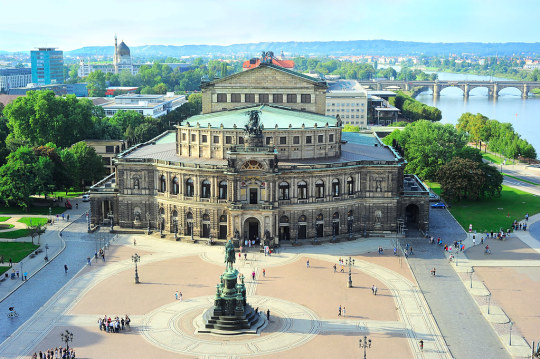
Semper Opera House, Dresden (by Chris Dingsdale)
#semper opera house#architecture#dresden#germany#europe#travel#travel blog#europe travel#saxony#sachen
647 notes
·
View notes
Text
The time in five-minute increments: The five-minute clock in the Semper Opera House and its 180-year history
The time in five-minute increments: The five-minute clock in the Semper Opera House and its 180-year history
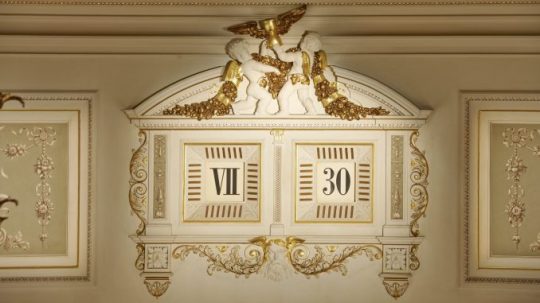
View On WordPress
#A Lange & Sohne#art#clock#five minute clock#lifestyle#The Semper Opera House on Dresden’s Theaterplatz.
0 notes
Photo
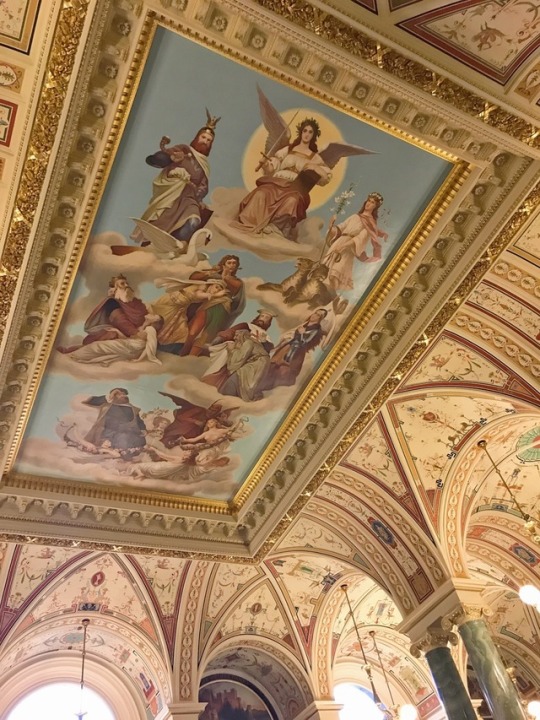
1 note
·
View note
Photo

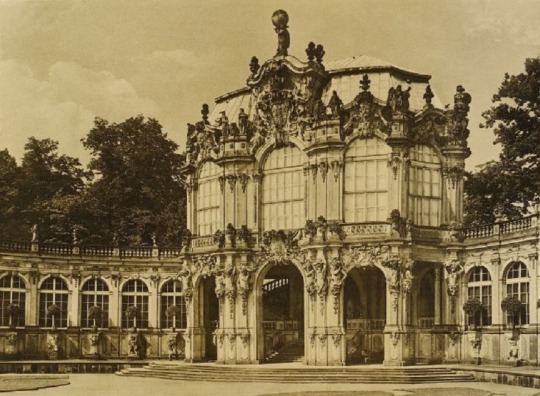





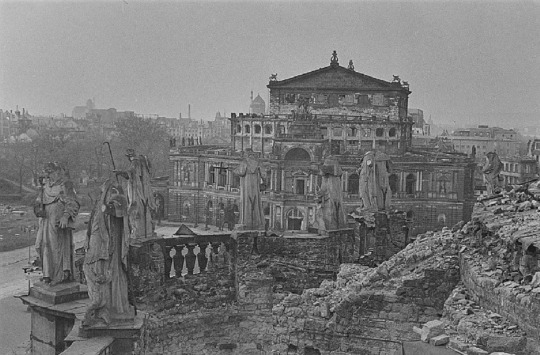

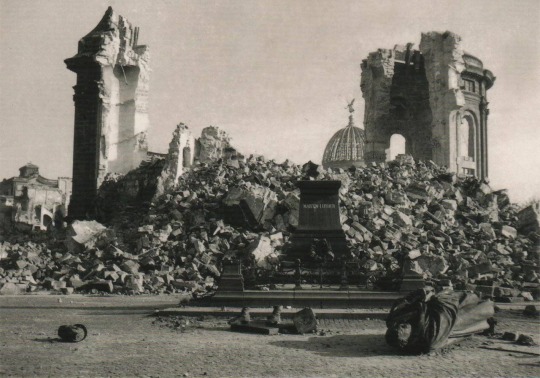
“Wer das Weinen verlernt hat, der lernt es wieder beim Untergang Dresdens. Dieser heitere Morgenstern der Jugend hat bisher der Welt geleuchtet. Ich weiß, dass in England und Amerika gute Geister genug vorhanden sind, denen das göttliche Licht der Sixtinischen Madonna nicht fremd war und die von dem Erlöschen dieses Sternes allertiefst getroffen weinen. Und ich habe den Untergang Dresdens unter den Sodom- und Gomorrha-Höllen der englischen und amerikanischen Flugzeuge persönlich erlebt. Wenn ich das Wort “erlebt” einfüge, so ist mir das noch wie ein Wunder. Ich nehme mich nicht wichtig genug, um zu glauben, das Fatum habe mir dieses Entsetzen gerade an dieser Stelle in dem fast liebsten Teil meiner Welt ausdrücklich vorbehalten. Ich stehe an Ausgangstor meines Lebens und beneide alle meine toten Geistes-kameraden, denen dieses Erlebnis erspart geblieben ist. Ich weine. Man stoße sich nicht an das Wort “Weinen”: die größten Helden des Altertums, darunter Perikles und andere haben sich seiner nicht geschämt. Von Dresden aus, von seiner köstlich-gleichmäßigen Kunstpflege sind herrliche Ströme durch die Welt geflossen, und auch England und Amerika haben durstig davon getrunken. Haben Sie das vergessen? Ich bin nahezu dreiundachtzig Jahre alt und stehe mit meinem Vermächtnis vor Gott, das leider machtlos ist und nur aus dem Herzen kommt: es ist die Bitte, Gott möge die Menschen mehr lieben, läutern und klären zu ihrem Heil als bisher.”
(Gerhart Hauptmann)
Dresden 13./15. Februar 1945
“Elbflorenz” wird die sächsische Stadt wegen ihrer barocken Prachtbauten genannt: der Zwinger, die Frauenkirche, die Brühlsche Terrasse, die Gemäldegalerien, das Grüne Gewölbe und die Semperoper sind nur einige ihrer weltberühmten Wahrzeichen. Dresden gilt als eine der schönsten Städte Europas.
Bisher war Dresden von Bombenangriffen verschont geblieben. Tausende Flüchtlinge hatten in der Stadt Zuflucht gesucht, weil sie glaubten, in dieser Kunst- und Kulturstadt vom Krieg verschont zu bleiben.
Am Faschingsdienstag, 13. Februar 1945 um 21:45 Uhr, wurde in Dresden der 175. Fliegeralarm ausgelöst. Die Menschen begaben sich in die Keller ihrer Häuser oder Wohnblocks und die wenigen vorhandenen Luftschutzbunker.
Die Angriffe begannen bei aufgeklartem wolkenlosem Nachthimmel. Um 22:03 Uhr wurde die Innenstadt von Lancaster-Bombern des No. 83 Squadron, einer „Pfadfinder“-Einheit, mit Magnesium-Lichtkaskaden („Christbäumen“) ausgeleuchtet, zwei Minuten darauf warfen neun britische Mosquitos rote Zielmarkierungen auf das gut sichtbare Stadion am Ostragehege nordwestlich des Stadtkerns. Von 22:13 bis 22:28 Uhr fielen die ersten Bomben. 244 britische Lancaster-Bomber der No. 5 Bomber Group zerstörten die Gebäude mit 529 Luftminen und 1800 Spreng- und Brandbomben mit insgesamt 900 Tonnen Gewicht. Sie gingen südwestlich des Zielpunktes in einem 45-Grad-Fächer zwischen der großen Elbschleife im Westen der Stadt, dem industriell bebauten „Ostragehege“ (heute Messegelände) und dem etwa 2,5 km Luftlinie entfernten Hauptbahnhof nieder.
In diesen 15 Minuten wurden drei Viertel der Dresdner Altstadt in Brand gesetzt. Gezielte Treffer einzelner Gebäude waren bei diesen Nachtangriffen der RAF weder beabsichtigt noch möglich. Vielmehr sollte ein Bombenteppich die gesamte Innenstadt großflächig zerstören. Die Flammen der brennenden Innenstadt nach der ersten Angriffswelle waren im weiten Umkreis am Himmel zu sehen. Manche Brände loderten noch vier Tage lang.
Um 1:23 Uhr begann die zweite Angriffswelle mit 529 britischen Lancaster-Bombern der No.1, No. 3 und No. 8 Groups der Royal Air Force sowie der No. 6 Group der kanadischen Luftwaffe. Sie warfen bis 1:54 Uhr insgesamt 650.000 Stabbrandbomben – 1500 Tonnen – über einem Gebiet von Löbtau bis Blasewitz und von der Neustadt bis Zschertnitz ab. Die von der ersten Angriffswelle verursachten Brände dienten nach Augenzeugenberichten britischer Fliegerbesatzungen zur Orientierung für die nachfolgenden Bomber. Ihre Bomben trafen auch die Elbwiesen und den Großen Garten, wohin viele Dresdner nach der ersten Welle geflüchtet waren. Die Frauenklinik Pfotenhauerstraße des Stadtkrankenhauses Dresden-Johannstadt und die Diakonissenanstalt in der Neustadt wurden schwer beschädigt. Beide Bombardements betrafen ein Stadtgebiet von etwa 15 Quadratkilometern.
Die zweite Angriffswelle zerstörte die Technik der ausgerückten Feuerschutzpolizei und verhinderte weitere Löschaktionen, sodass sich die zahlreichen Einzelfeuer rasch zu einem orkanartigen Feuersturm vereinten. Dieser zerstörte ganze Straßenzüge. In der extremen Hitze schmolzen Glas und Metall. Der starke Luftsog wirbelte größere Gegenstände und Menschen umher oder zog sie ins Feuer hinein. Sie verbrannten, starben durch Hitzeschock und Luftdruck oder erstickten in den Luftschutzkellern an Brandgasen. Wer sich ins Freie retten konnte, war auch dort dem Feuersturm und detonierenden Bomben ausgesetzt.
Den Nachtangriffen folgte am 14. Februar von 12:17 bis 12:31 Uhr ein Tagesangriff von 311 bis 316 B-17-Bombern der USAAF und zwischen 100 und 200 Begleitjägern. Sie warfen bei wolkenbedecktem Himmel über Dresden nach Zielradar 1.800 Sprengbomben (474,5 t) und 136.800 Stabbrandbomben (296,5 t) ab. Ihre Angriffsziele waren einige Rüstungsbetriebe und erneut der Bahnhof und das Reichsbahnausbesserungswerk Dresden in Friedrichstadt. Getroffen wurden auch das dortige Krankenhaus und umliegende Stadtteile. Wegen einer Wetterfront wichen zwei Bombergruppen etwa 100 km südwestlich vom Kurs ab und bombardierten nach Ausfall des Anflugradars einen Ortsteil von Prag im Glauben, es sei Dresden. Im etwa 35 km entfernten Neustadt ging am 14. Februar von den Nachtangriffen verursachter Ascheregen nieder.
Am 15. Februar etwa um 10:15 Uhr stürzte die ausgebrannte Frauenkirche- das Wahrzeichen und die Seele von Dresden- ein.
Von 11:51 bis 12:01 Uhr folgte ein weiterer Tagesangriff von 211 amerikanischen Boeing B-17 Flying Fortress. Bei schlechter Sicht warfen sie 460 Tonnen Bomben, verstreut auf das gesamte Gebiet zwischen Meißen und Pirna.
Abgesehen dass von den architektonischen Kunstschätzen Dresdens kaum etwas übrig blieb, wird über die Opferzahlen heftig debattiert. Historiker gehen von etwa 25.000 Toten aus, während Augenzeugen und Überlebende von Hundertausenden ausgehen, zumal sich in Dresden damals Tausende von polizeilich nicht erfassten Flüchtlingen aufhielten und zahlreiche Opfer durch die immense Hitze der abgeworfenen Bomben verbrannten, ohne Spuren zu hinterlassen.
Dresden 13./15. February 1945
Dresden is one of the most beautiful cities in Europe. For its unique architectural beauty it is called “Elbflorenz” (“Florence of the Elbe”). Zwinger Palace, Frauenkirche (Church of Our Lady), Brühl’s Terrace, the Picture Galleries, the Green Vault and the Semper Opera House are just some of its world-famous landmarks.
So far, Dresden had been spared from air raids. Thousands of refugees had sought shelter in the city because they believed they were spared from the war in this city of art and culture.
On Shrove Tuesday, February 13 1945 at 9:45 pm, sirens sounded the 175th air raid warning in Dresden. The people went to the cellars of their houses or apartment blocks and to the few existing air-raid shelters.
The attacks began on a clear, cloudless evening sky. At 22:03 Lancaster bombers of the No. 83 Squadron, a “scout” unit, lit the inner city with magnesium light cascades (“Christbäume”), two minutes later nine British Mosquitos threw red target marks on the well-visible stadium at the Ostragehege northwest of the city center. From 22:13 to 22:28 the first bombs fell. 244 British Lancaster bombers of the No. 5 Bomber Group destroyed the buildings with 529 airmines and 1800 explosive and fire bombs with a total weight of 900 tons. They descended to the south-west of the destination in a 45-degree fan between the large Elbe loop in the west of the city, the industrially built “Ostragehege” (today exhibition grounds) and the main railway station, which is about 2.5 km away.
In these 15 minutes, three quarters of Dresden’s historic distric were set on fire. Targeted hits of individual buildings were neither intended nor possible during these RAF night attacks. Rather, a bomb carpet should destroy the entire inner city on a large scale. The flames of the burning city center after the first wave of attack were visible in the sky within of many hundreds of miles. Some fires continued for four days.
At 1:23 the second attack wave began with 529 British Lancaster bombers of No.1, no. 3 and no. 8 groups of the Royal Air Force and the No. 6 Group of the Canadian Air Force. They threw a total of 650,000 bomb bombs - 1500 tons - over an area from Löbtau to Blasewitz and from Neustadt to Zschertnitz until 1:54 am. The fires caused by the first attack wave were used by the British aviation authorities to provide guidance for the subsequent bombers. Their bombs also hit the meadows of the river Elbe and the Great Garden, where many Dresdeners had seeked shelter after the first air raid. The gynaecological clinic Pfotenhauerstraße of the city hospital Dresden-Johannstadt and the hospital “Diakonissenanstalt” in the Neustadt were severely damaged. Both bombardments concerned a city area of about 15 square kilometers.
The second attack wave destroyed the technology of the fire-fighting police, and prevented fire-fighting duties, so that the numerous individual fires quickly combined into a hurricane-like firestorm. This destroyed whole streets. In the extreme heat glass and metal melted. The strong air suction swirled larger objects and people around or pulled them into the fire. They burnt, died of heat shock and air pressure or suffocated from the fire gases in the few air-raid shelters. Anyone who could save himself in the open air was also exposed to the firestorm and detonating bombs.
On 14 February from 12:17 to 12:31 a day attack followed from 311 to 316 B-17 bombers of the USAAF and between 100 and 200 accompanying hunters. They threw 1,800 explosive bombs (474.5 tons) and 136,800 bombs (296.5 tons) over Dresden in the cloudy sky. Their attack targets were some armaments companies and again the station although virtually everything of it already was in ruins. The hospital and surrounding districts were also affected. Because of a weather front two bomber groups deviated about 100 km southwest of the course and bombed a district of Prague in the belief that it was Dresden after the failure of the approach radar. In the Neustadt (new town), which was about 35 km away, a ash fall was caused by the night attacks on 14 February.
On February 15, at about 10:15 the burned-out Frauenkirche - the symbol of the heart of Dresden - collapsed.
From 11:51 to 12:01 followed another day attack of 211 American Boeing B-17 Flying Fortress. In poor visibility they threw 460 tons of bombs, scattered over the entire area between Meißen and Pirna.
Surviving eyewitnesses testify that some allied bomber pilots chased people in low-level flight like rabbits to kill them. The use of phosphor by the Allies is denied by historians but surviving eywitnesses state that a building like the Dresden train station that was build of massive steel melted like wax and that even paving stones were in flames. This could only be caused by the use of phosphor.
Apart from the of complete destruction of all of Dresden’s numorous architectural treasures, the number of victims is heavily debated. Historians go on about 25,000 deaths, while witnesses and survivors are speaking of hundreds of thousands because in Dresden thousands of unaccounted refugees were present at the time of the bombings, and numerous victims were burned to ashes immediately by the immense heat during the air raids.
The famous German poet Gerhart Hauptmann wrote:
“Whoever has forgotten how to weep, he learns it again at the downfall of Dresden. This cheerful morning star of youth has so far shone to the world. I know that there are good spirits in England and America, to whom the divine light of the Sistine Madonna was not alien, and which are deeply moved by the extinction of this star. And I personally experienced the downfall of Dresden under the Sodom and Gomorrah hells of English and American airplanes.
When I insert the word “experienced”, it is still a miracle to me. I do not take myself to be so important to believe that the Fatum has reserved this horror just at this point in the almost dearest part of my world. I stand at the end of my life and envy all my dead fellow writers, who have been spared this experience.
I weep. One does not irk touch the word “weeping”: the greatest heroes of antiquity, including Pericles and others, have not been ashamed of it. From Dresden, from its deliciously artistry, splendid streams have flowed through the world, and England and America have also drank of thirsty. Did they forget that? I am almost eighty-three years old, and stand with my legacy before God, which is unfortunately powerless and comes only from the heart: it is the request that God should love men more, purify and clarify their salvation than before. “
#dresden#sachsen#meine heimat#deutschland#bombardierung#geschichte#saxony#germany#my homeland#bombing#wir werden niemals vergessen#we will never forget#unaussprechlich traurig#inexpressibly sad
12 notes
·
View notes
Photo

Semper Opera House, Dresden (by Chris Dingsdale) / http://picstreet.fr
5 notes
·
View notes
Text
Character Traits Meme
I was tagged by @emotionalsupportsith and @sunsetofdoom. Thank you!
Your muse’s name: Mara Thrask
A favorite picture/faceclaim of your muse:
This isn’t so much my favorite picture so much as the one I have access to at work, but it’s still pretty good.

And because I feel like giving you all some extras, her face claim is Deepika Padukone, and this gif is basically what Quinn sees every time he looks at his wife. (Maybe not the hawt strappy dress, but the sexy windblown hair and preternatural beauty? Even in the middle of combat that’s what he sees.)

Two headcanons you have for your muse:
She’s a gifted, classically-trained singer. In another life she would have pursued an opera career (and THERE’S an AU to write holy crap - Phantom of the Opera AU coming right up, except Mara is both the ingenue and the monster).
Even though Mara is nearly the same height as Quinn and as her Human father - she’s just under six foot tall - she’s short for a Red Sith. Her mother and aunts all push seven feet. I’m certain Red Sith from more traditional families think she’s a mixed-species runt, but no one would ever say it to her face so long as her house remains politically powerful. Also any children who said it to her face when she was at the Academy got their asses beat, so.
Three things your muse likes to do in their free time:
Watch trashy holofilms with Vette, Jaesa, and Pierce. Quinn has no idea how someone as cultured as his wife can find value in such insipid entertainment, but there we go.
Reading - subjects run the gamut from historical non-fiction to trashy romance. One of her favorite ways to relax is parking on a plush couch with Quinn, the thunder rolling outside, and each reading their own book and sipping their own whiskey, snuggled together and ignoring each other like amiable cats.
Cooking. It’s one way she shows affection to her loved ones - whether it’s teaching Quinn the finer points of Korribani cuisine or deep frying sleen tails for trashy holofilm night. She serves the sleen tails with an ungodly spicy sauce and a heavy Ziostian-style stout.
Seven people your muse loves/likes:
Her extremely devoted, adorable, idiot husband.
Their four children
Her father
Her aunts and cousins
Vette and Jaesa
Dysprosia
Daveth
I have no idea why I grouped them like that but there you go.
A phobia your muse has?
She does NOT like being in or near water too deep to see the bottom. She can swim, but she just... doesn’t like it.
Tagging... @semper-draca, @tishinada, @inquisitorhotpants, @aliyamirat, @valeryanroot and anyone else who would like to consider themselves tagged.
6 notes
·
View notes
Text
Tenore azero ottiene il licenziamento della soprano armena Ruzan Mantashyan
Tenore azero ottiene il licenziamento della soprano armena Ruzan Mantashyan
Tenore azero ottiene il licenziamento della soprano armena Mantashyan
– DRESDA: il tenore azero Yusif Eyvazov è riuscito nel suo intento di allontanare una soprano armena, Ruzan Mantashyan, da un evento operistico organizzato a Dresda, il Semper Opernball.
Secondo quanto riportato dal sito slippeddisc.com, la soprano Mantashyan venne invitata a partecipare ad un evento classico organizzato nella…
View On WordPress
#Dresda#Dusan Bogdanovic#Hasmik Papian#Opera#Ruzan Mantashyan#Semper Opera House#Semper Opernball#Soprano armena#Tenore azero#Yusif Eyvazov
0 notes
Text
鋼琴巨匠 鲁道夫·布赫宾德(Rudolf Buchbinder)
德累斯顿国家管弦乐团(Staatskapelle Dresden)
貝多芬鋼琴協奏曲 全集
5,15,2019 在廣州星海音樂廳(至16日)
今晚的貝多芬第五鋼琴協奏曲,完美無瑕,坐在靠後的樓座,除了一覽全場觀眾,還能自如地觀察鋼琴家的指法。
到底是集德奧傳統之大成的百年名團,聽上去,仿佛整個樂團被聚集在一種魔幻般的合力中。非常集中的聲音,情緒濃度非常大,而布赫賓德可以非常遊刃有餘地駕馭這首鋼琴協奏曲的特殊情緒,樂團在他手裡,纖细又不乏張力的演繹,而恰到好處的分寸,令我聽到的聲音似乎不是這個現場,像聽慣了的唱片合集的某一張。
德累斯頓國家管絃樂團,連同這個城市的國家歌劇院(在semper opera house森帕歌劇院),都令我回想起當年在這裡的現場看他們的演出。其實离柏林並不遠,兩個小時的火車,這城的古典氣質讓人屏息,易北河邊看這城的輪廓,空氣中也彌漫那些厚重的人文沉澱,我可以在哲學家步道散步,如果耳邊迴旋的是貝多芬的鋼琴協奏曲,就與這城的氣質不謀而合。
今晚德累斯頓國家管絃樂團來到廣州,自然是大件事,雖然去年10月他們也在這裡演奏了舒曼交響樂全集,由thielemann指揮,不過今晚協奏雖然編制小,也毫不掩飾這個世界名團的一貫實力。
德奧作曲家的作品還是由德奧名團演奏最正宗,真正的德奧氣質,思辨和浪漫情懷都熔於一爐——氣息不散,而是讓人驚歎的一致性。當然演奏的技術已經在對貝多芬音樂的靈魂表達層面讓人歎為觀止——
於是我聽到的是這首第五鋼琴協奏曲的夜闌人靜、歡欣情緒和鋼琴炫技並於樂團的對答,都妙不可言。貝多芬第五鋼琴協奏曲於1811年首演於萊比錫,音樂內容跌宕起伏,靈感取自法奧戰事,在維也納寫作完成,宏亮的和弦,溫柔的詩歌樂句,迴旋曲與奏鳴曲的混合,鋼琴華彩樂段作結,都讓人記憶深刻。
布赫賓德今晚狀態很好,飽滿的情緒令這個現場充滿魅惑的氣質。鋼琴的炫技和情緒都無可挑剔,而由布赫賓德主導的鋼琴與樂隊的對答,完美的融合——這是一個珍貴的現場,似乎無法復刻。
每一次的古典音樂的現場,其實也受制於當時的狀況,諸如空氣的幹濕度、遠道而來的團员的精神面貌,還有這個場地對聲音詮釋的可能性。於是我總是擔心,像柏林愛樂、維也納愛樂等,演慣了自己的主場,也亮出了招牌的聲音氣質,連錄音作品都是獨一無二的,更可怕的是,耳朵挑剔的超級樂迷,完全可以辨別其中極為微小的差異。
我不知道這次德累斯頓國家管絃樂團有沒有專門的樂器乾濕度保管,單憑今天廣州如此大的空氣濕度和高溫,都讓人捏一把汗。好在,當我奔進音樂廳的樓座,聽到第一聲弦樂和鋼琴,我相信,這確實是德奧名團,世界名團,德奧大師的鋼琴協奏曲,算是大飽耳福。
當然能夠在廣州聽到貝多芬鋼琴協奏曲全集,這除了是一種文化姿態,文化高度,也是繞有興味的美好經歷,實際上也是廣州大件事,我也希望聽到成熟的評論、把玩拿捏的聲音。
就像大凡有風格成熟、技術幹练、情緒厚重的樂團到訪紐約,總可以在第二天的《紐約時報》看到大幅的黑白照片和銳利有觀點的樂評,也能引發續演的狂潮,或者是反面——差評引發的門可羅雀。所以,一場劃時代的演出,應該留下驚鴻一瞥的痕跡。可惜此等格調,衹能扼腕嘆息。粗暴與簡單,正在吞噬一種細緻的文化品鑒——可能是一種系統性的制度與文化的缺失。
演畢,布赫賓德在後臺與我等樂迷簽名留念,這畢竟是一個美妙的瞬間,那一刻,仍然是內心狂亂的節日,也激發一種奇特的力量,溫柔而又堅定。 @ Xinghai Concert Hall
1 note
·
View note